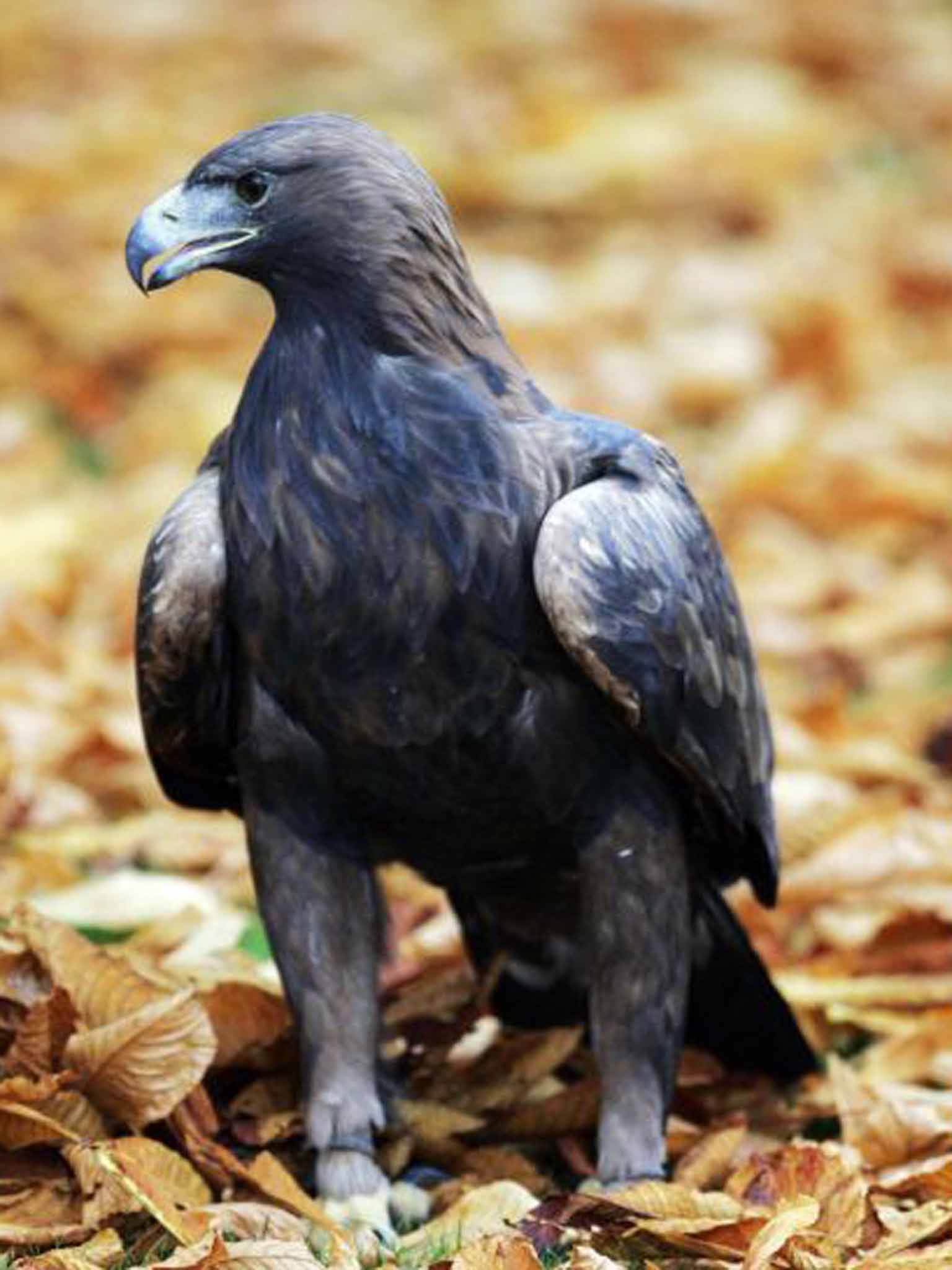England's only golden eagle: Why is the RSPB not acting to find a mate for this lonely bird?
Hugh Webster went on the trail of Eddy and finds out why there's some hope for his kind

Your support helps us to tell the story
From reproductive rights to climate change to Big Tech, The Independent is on the ground when the story is developing. Whether it's investigating the financials of Elon Musk's pro-Trump PAC or producing our latest documentary, 'The A Word', which shines a light on the American women fighting for reproductive rights, we know how important it is to parse out the facts from the messaging.
At such a critical moment in US history, we need reporters on the ground. Your donation allows us to keep sending journalists to speak to both sides of the story.
The Independent is trusted by Americans across the entire political spectrum. And unlike many other quality news outlets, we choose not to lock Americans out of our reporting and analysis with paywalls. We believe quality journalism should be available to everyone, paid for by those who can afford it.
Your support makes all the difference.Unfairly vilified, the UK's golden eagle population has plummeted. There are around 440 pairs of golden eagles resident in the UK today, but behind this number is a story of vacant territories and missing birds, a history of decline and ongoing persecution. Numbers diminish as you trace your finger south and east on a distribution map as the eagle flies; away from their craggy fastnesses on Scotland's west coast the eagles fall, subject to traps, snares, poison or the gun, most notably around the intensively managed grouse moorlands of the central and eastern Highlands.
Healthy numbers of golden eagles remain today only around the remotest refuges of north‑west Scotland. Northern England, historically home to dozens of pairs, has since 2004 been home to just one solitary remaining golden eagle, a single, lonely male persisting within our borders, remnant of a wilder heritage, a last eagle making a last stand in the North. Each year Eddy, as he is known locally, sky dances, soaring and swooping over the bracken-brindled flanks of Lakeland's high fells, but he is now cut off from the rest of his kind. When he dies there will be no more wild eagles in England.
Keen to bear witness to this vanishing fragment of our natural heritage I set out to locate this last eagle. Walking round the southern tip of Haweswater, I spied a peregrine scudding overhead, streaking down from Harter Fell. Closer, a pair of buzzards wheeled against the blue sky, but there was no eagle. Departing the lakeshore I left behind noisy geese and plinking oystercatchers to turn into Riggindale, a narrow, steep-sided valley furrowing away westwards and closed off at its head by the high ridge line known as High Street. It was a fine spot, defensible one felt, a suitable redoubt for England's last eagle and one where he can often be found.
I met and spoke with two RSPB wardens: why is the RSPB not acting to find a mate for this lonely bird? They explained a pragmatic reluctance about investing finite conservation resources in acting as matchmaker for the ageing Eddy, a bird nobody was even sure remained fertile, combined with the difficulties in winning over reluctant stakeholders in the form of sheep farmers and gamekeepers wary of these great birds.
Instead, the strategy has been to focus resources on reinforcing the small, isolated, but still viable population of eagles in southern Scotland. Here, a partnership between the RSPB and Scottish Land and Estates recently received backing from the Scottish Environment Minister, Dr Aileen McLeod, who expressed the determination of the Scottish Government that persecution of raptors will not be tolerated under any circumstances. The scheme hopes to release as many as eight birds annually over three to five years on the Langholm Estate in Dumfries and Galloway. If successful, this reinvigorated population could one day recolonise the nearby Lake District.
Meanwhile, the wardens confirm for me that it is among the craggy outcrops below the peak of Kidsty Pike that England's last eagle likes to perch and can often be viewed from the RSPB hide nestled on the valley floor. Had I arrived earlier, I hear, I could have watched him soar, his 7ft wingspan reduced to a vanishingly tiny speck amongst the lofty wisps of trailing cirrus clouds.
Encouraged, I sat and watched for some hours in the afternoon sunshine, but in the end I left disappointed. Eagles range over huge areas and to find just one brings new meaning to the phrase seeking a needle in a haystack. I stopped instead at the Golden Eagle Hotel on the lakeshore on my way home. "Do you get many visitors looking for the eagle?" I asked the woman behind the bar.
"Oh yes, there are plenty of folks who come looking for Eddy," she said, but then confessed not to have seen him herself. "Perhaps I'm just unlucky."
Yet clearly Eddy's is already a vanishing presence. Eddy the actual eagle; kin to Martha, the last passenger pigeon, Cecil the lion and Betty, one of England's last hen harriers, shot last year. We name these animals even as they disappear from the fabric of our planet.
Perhaps it is fitting that my quest ended in failure – to find England's last eagle on so casual an expedition might have felt inconsequential. Yet when Eddy does complete his final sky dance, when in all likelihood he slips unnoticed back into the ether, the English mountains will feel different – no longer home to England's last true apex predator. And they will be infinitely poorer for it.
Join our commenting forum
Join thought-provoking conversations, follow other Independent readers and see their replies
Comments